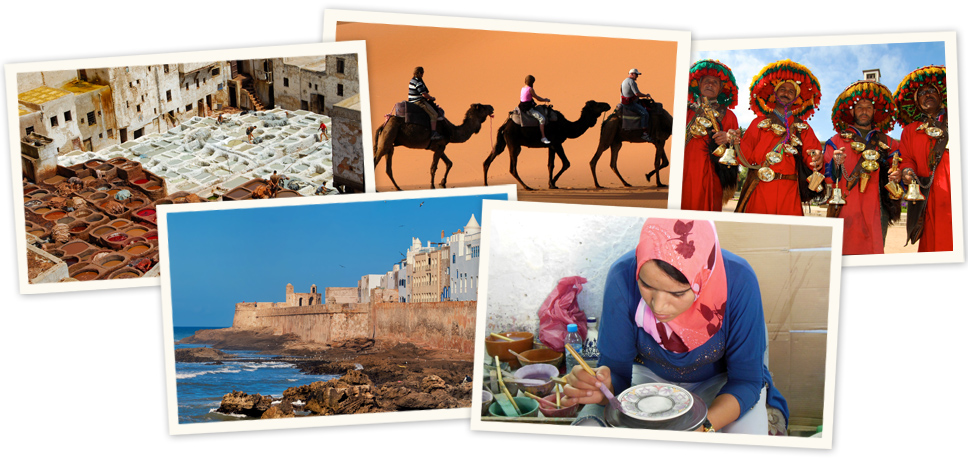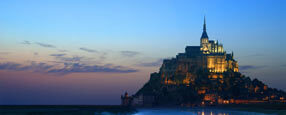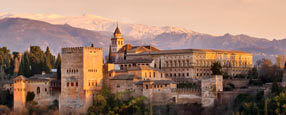MOROCCO TOUR with York College
Depart JFK 30 May 2022
Cost from: 3995 USD *
Single Supplement: 690 USD
* per person in a triple or twin share
ITINERARY IN BRIEF
Welcome to Morocco!
A modern city and the trade capital of Morocco, Casablanca is a magnificent mix of modernism and tradition. It
is the largest metropolitan city in the Maghreb and is characterized by elegant buildings, great avenues and
unique architectural art forms and Moorish finishes featured throughout the numerous domes and columns.
Overnight in Casablanca.
We start our day with a brief tour of Casablanca before heading to Rabat. Nearby we'll visit the impressive
Hassan II Mosque, the second largest mosque in the world after Mecca in Saudi Arabia. The mosque is open to
non-Muslims as a daily shared tour, which highlights it's impressive modern interior.
We then continue with a visit to the Museum of Moroccan Judaism in Casablanca, the first of its kind in the
Arab world, created by the Jewish Community of Casablanca in 1997 with the support of the Foundation of
Jewish-Moroccan Cultural Heritage.
We then travel by road to Rabat, the nation's capital. Here we visit the Royal Palace, the wild gardens of the
Chellah, a 14th-century Merinid necropolis; and walk through the Andalusian Gardens within the walls of the
Kasbah of the Oudaya. We visit the Hassan Tower, a huge unfinished minaret built mostly at the end of the 12th
century. We also visit the Mohammed V Mausoleum, dedicated to the founder of modern Morocco and
grandfather of the current king, as well as the newly-opened Museum of Contemporary Art.
Overnight in Rabat.
Today we head for Tangier visiting the site of Lixus along the way. The site was a trading center for first the
Phoenicians, then the Carthaginians, and finally the Romans, but its history is thought to be much older than
these conquerors. The ruins include a temple, theater, acropolis, and baths, and although the site is overgrown,
it's highly atmospheric. In nearby Larache we visit the Archaeological Museum, which feature a collection of
finds unearthed from Lixus, including an interesting display of perfume bottles and jewellery.
We continue to Tangier and have a tour of the city and its surroundings, including Spartel Cape and the
Hercules Caves, with its picturesque views of the Atlantic Ocean and the famed Strait of Gibraltar. We'll explore
the Kasbah district located next to the port before heading towards the old Medina. We pass the Grand Sacco
and the Mendoubia Park and visit the Petit Sacco, with its multitudes of boutique hotels and riads. This historic
location has hosted a variety of famous artists, including Matisse and Paul Bowles.
Overnight in Tangier.
Today we travel to Chefchaouen, visiting Tetouan on the way.
Tetouan is a jewel of a town in a striking location at the foot of the Rif Mountains, just a few kilometres from
the sea. The ancient medina, a UNESCO World Heritage site, looks like it has not changed in several centuries.
The modern centre that abuts it gleams in white, its Spanish facades given a recent facelift. This beautiful city is
located on the rift of the mountainous region between the Mediterranean Sea and the Iberian Peninsula.
We continue to Chefchaouen, known worldwide for its medina of shady alleys, whitewashed houses with blue
turquoise doors, wrought iron windows and colourful tile-covered roofs, busy squares, and steep alleyways. The
best way to discover this holy town is to wander around on foot, taking in the atmosphere. We can sit on the
terrace of a cafe and take in the view of the grand Tarik-Ben-Ziad mosque. Examples of Andalusian architecture
can be found in the kasbah and its gardens. We'll visit the interesting ethnographic museum, featuring
collections of embroidery and various pieces of clothing; the famous djellaba, the long and ample garment
worn by the men and women of North Africa, was created here. For something different we will visit a
traditional oil mill (there are more than 1500 of them!). Chefchaouen is also renowned for its basket-making
and its pottery.
Overnight in Chefchaouen.
Today we travel to Akchour, a beautiful natural area near Chefchaouen, which features stunning mountains
gorges and lush vegetation in a country better-known for desert landscapes. Here we're able to enjoy the
natural side of Morocco and have a chance to stretch our legs with some light hiking, possibly to a waterfall for which the region is famous.
Our accommodation-or hermitage-comprises several free-standing cabins scattered across whimsical
gardens, romantically lit at night. The main house is a diaphanous, open-plan space for dining and hanging out,
with a well-stocked library and a music room filled with drums and a baby grand.
Overnight at Akchour.
Early this morning we depart for Fes (this is a full day!)
Along the way we will make a stop at Meknes, the famed Ismailia capital known for its 40 km long walls and
numerous gates. Next we visit Bab Mansour, the Royal Stables, the amazing markets and also the popular
Jewish quarter.
Before arriving in Fes we will explore the ruins of the ancient city of Volubilis, the most important and extensive
remains of a Roman city in Morocco. This was one of the most distant of the Empire's domain, thanks to the
powerful Berber tribes who showed themselves to be more than a match for the conquering legionnaires. Once
one of the most important regions producing grain to feed the voracious Roman appetite, and wild animals to
keep the crowds entertained as they tried to devour gladiators in the arena, this prosperous provincial city was
home to some 200,000 residents at the height of its glory. The importance of the city is reflected in the
Capitoline temple, the Basilica, said to be one of the most beautiful in Africa in its day, and its 1,300 square
meter Forum, with sumptuous mosaics still to be seen in some of the most luxurious homes.
We continue to Moulay Idriss, the oldest town in Morocco, founded by Moulay Idriss I in 789, who fled Mecca
because of religious and tribal conflicts. It was here that the Idrisid dynasty was founded, and the town has the only round minaret in Morocco.
Finally we arrive in Fes, one of Morocco's four Imperial Cities and the cultural heart of Morocco.
Overnight in Fes.
Founded in the eighth century by Moulay Idriss I, this imperial capital was a renowned center of medieval
learning. Also known as Fes el Bali, this UNESCO World Heritage Site was founded in the 9th century and is
home to the world's oldest university. The city of Fes reached its true economic and cultural height in the 13th
14th centuries under the Merinids, when it replaced Marrakech as the capital of the kingdom. Although the
political capital of Morocco was transferred to Rabat in 1912, Fes has retained its status as the country's artisan
centre.
Today we stroll the labyrinthine old quarter, with its 9,000 narrow lanes, alleys and souks. Artisan workshops in
the medina are as active today as they were 100 years ago and strongly contribute to the citys industrial
economy. Trades such as blacksmithing, leather working, ceramics, silk, tapestries, and sculpting are still
practiced in these workshops today.
We proceed to the intricately detailed 14th-century Karouine Mosque, one of the oldest, still-functioning universities in
the world, and Nejjarine Square. We also see the Royal Palace and Mellah, the Jewish Quarter.
Overnight in Fes.
Today we travel to desert-fringed Erfoud, pausing for lunch in Midelt. En route we marvel at everyday life,
passing Berber villages, endless date palm plantations, and the majestic Atlas Mountains. Our journey
continues along the dramatic Ziz Gorge, passing the ancient holy city of Rissani, once a stop for the caravans of
the 8th century. After a full day of travel we will arrive at our final destination, Erfoud.
Upon arrival at our camp you will witness the sunset from over the desert dunes and enjoy the changing
colours of the landscape. If you're up to it you can also ride a camel! This evening 4x4 vehicles take us to the
dunes of Erg Chebbi, a strikingly strange natural formation.
Overnight Chergui Sahara Camp, Merzouga.
Today we travel toward Ouarzazate, once a stopping point for African traders travelling to the cities of Morocco
and Europe beyond. En route we enjoy views of the High Atlas southern slopes, intersecting the Dades Valley's
flourishing crops, irrigation canals, and palm trees. We travel the "Road of a Thousand Kasbahs" and make a
stop to visit an amazing, small private museum that houses exhibits showcasing local art, culture and history, before proceeding to Ouarzazate. En-route, we stop at the Dades Gorge; the Dades River provides a life source
to the valley's greenery. Our overnight point is Skoura, one of Morocco's beautiful oases, which offers travellers
a chance to rest and enjoy a bit of nature.
Overnight at Skoura.
Today we tour nearby Ouarzazate, a city originally built as a French garrison in the 1920s. Today, the city is a
regional trade center, known for its pottery and carpets. We see the Taourirt Kasbah, which now consists of
simple clay houses and crenelated towers that are beautifully decorated with geometric motifs.
We also visit the village of Telouet, which hosts one of the area's most recognized structures, the palace of the
"Lord of the Atlas." This palace was the residence of the once Vizier of Marrakech back in the early 20th
Century. Dating back to the period when the Glaoui clan ruled over the Atlas and Marrakech, this palace acted
as the family's Headquarters and was situated in a dramatic location on a broad mountain valley, providing
sweeping views of the peaks on all sides.
We then head to Ait Ben Haddou, a fortified village or "ksar," ideally positioned along a once frequented,
ancient caravan route linking the Sahara and Marrakech. This quaint and picturesque village has been featured
in numerous Hollywood film productions.
Overnight at Air Ben Haddou.
Today's full-day journey takes us over the High Atlas Mountains on the impressive zig-zag of Tiz n Tichka Pass.
As we approach Marrakech, the scenery becomes flatter and greener, as the city is the centre of a large
palmerie oasis. You will notice an abundance of the pink mud-brick buildings amid this tree-filled city. With it's
unique character and charm, Marrakech lures visitors with a hospitable climate and superb location.
This evening we visit the famous Djemma el-Fna in the centre of the city. The Djemma el-Fna is like nowhere
else in North Africa; this "Assembly of the Dead," offers a spectacle that is a must-see when visiting Morocco. In
the busy square you will witness a carnival of musicians, snake charmers, acrobats, story-tellers, witch doctors,
dentists, clowns, monkey's and the like. The enduring smells of the Djemma's food stalls, piled high with
platters of speciality cuisine, are well worth a visit just for the experience.
Overnight in Marrakech.
Today we discover the delights of Marrakech, starting in the medina, the old walled section of town that is a
UNESCO World Heritage Site. Marvel at its architectural jewels, including the soaring Koutoubia minaret, which
dominates the skyline of Marrakech and can be seen from almost every approach to the city thanks to a longstanding
planning ordinance that forbids any other building in the old city to rise above the height of a palm
tree.
We also visit the Saadian Tombs, which were only accessible via the mosque next door. However, in 1917 they
were opened to the public and can now be accessed via a narrow passage that leads to an enclosed garden
watched over by two mausoleums that include more than one hundred mosaic-decorated tombs.
Next is the El-Bahia Palace. This 19th century palace is elaborate in its decoration and was built over a period of
seven years for Ba Ahmed, the son of the Grand Vizier Si Moussa. There are row after row of apartments-that
once housed Ahmed's harem-a trapezoidal garden, a huge tiled courtyard, and many hidden treasures, both in
the form of antique objects d'art and the palace's convergence of Andalusian and Moorish architecture.
This afternoon/evening, we enjoy a Moroccan cooking class at a farm near the city. We prepare starters, tagines
and desserts. We'll also have a guided walk in the village to meet the local people.
Overnight in Marrakech.
Today our journey takes us to the Atlantic coast and Essaouira, one of the most picturesque towns in the
country. On arrival we'll dive into it's history and see how as an original Phoenician trading post, it prospered
during the Roman era as citizens extracted the Tyrian purple colour from a local shellfish. Explore the
fortifications that ring the city; built by the Portuguese, the walls are inherent to the charm of Essaouira.
You will have time to see the other attractions including the port, where a daily supply of fresh fish can be
found, and a tremendous beach that stretches away to the south. The easy-going nature of the town, the
medina, the dramatic fortifications and the beach, have created an atmosphere quite different from
the rest of the country.
Overnight in Essaouira.
Today we travel by road back to Casablanca, a journey of about 6 hours.
Overnight in Casabanca.
Airport transfer and departure.
BON VOYAGE!
INCLUSIONS
- Accommodation in 3 star hotels on a triple or twin share
- Sightseeing and entrance fees as per itinerary
- Transportation in a private coach
- Local guides
- Breakfast and dinner daily
- Gratuities to local guides and driver
- Services of an Adventures Abroad tour leader
- Air from JFK to Casablanca return
EXCLUSIONS
- Items of a personal nature
- Travel insurance
- Gratuities to your Adventures Abroad tour leader
TOUR SAFETY
Global Educational Travel has implemented new safety measures and has received the World Travel and Tourism Council's Safe Travels stamp, which provides travellers with the assurance that we have adopted health and hygiene global standardised protocols – so you can experience 'Safe Travels'.
Click here for more info
LOOKING FOR INSPIRATION?








